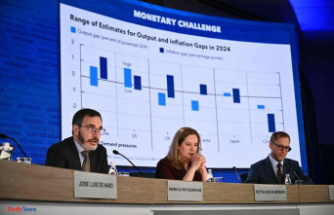In 2019, the number of global e-commerce sales rose to $3.535 trillion. It’s believed that by the year 2021, this number will rise to $4,5 trillion. Needless to say, online retail has evolved these past years and this is all thanks to Amazon. People don’t have to leave their homes, see or even touch the goods that they want to buy. Nowadays, they can get everything with the click of a button. Soon, all shopping will be facilitated by e-commerce.
Internet commerce has had a huge impact on society, there’s no denying that. Even if there are many positives, the industry’s processes leave a lot to be desired. E-commerce businesses generate a considerable amount of packaging waste that pollutes the ecosystem and ends up in the landfill. The question now is: Are online retailers doing anything about it? Well, we’ll; have to see.
The Amazon effect: How online retailers are wasting packaging
Have you ever heard about the Amazon effect? We’re not talking about the impact created by the online on the traditional brick and mortar store. No, we’re talking about the economic and environmental impact of its current operations. To be more precise, the massive online retailer doesn’t encourage sustainable consumption of packaging. The world is drowning in packaging waste which doesn’t break down quickly. Actually, some of the packaging doesn’t break down at all. The Amazon effect is just one reason why the environment is in trouble.
E-commerce waste is slowly but surely transforming into a big issue. The industry currently uses packaging that is made of plastic, paper, in addition to air packets, bubble wrap, tape, and cardboard cartons. Surprisingly, purchases like scented sticks and USB memory sticks require more packaging as compared to bulkier items. Sellers use bigger boxes, additional layers, and air pockets to make sure that the contents are delivered intact. Maybe so, but all of these items end up in the trash bin. They have a lifespan of only a couple of hours.
You don’t have to be an environmentalist to see that the packaging that accompanies many products does more harm than good. A lot of the planet’s resources are used and the impact on the environment is non-negligible. Goods should arrive in perfect condition at the destination. However, we shouldn’t sacrifice the planet for our comfort.
How e-commerce companies are tackling the packaging problem
You’ll be happy to hear that many companies are reducing their packaging, even though it’s not mandatory. They make great efforts to produce less waste and put an end to the “wrap problem”, as it’s commonly referred to. All online retailers should start thinking outside the box and make drastic changes in the ways their businesses approach packaging. Here are just some examples of ways organizations are reducing the environmental impact of their packaging.
1. Going green with minimalist packaging design
If you thoroughly examine package material use, you’ll understand just how much waste is produced throughout the product life cycle. A minimalist packaging design doesn’t promote waste. On the contrary, it leads to a reduced use of raw materials and production costs. GF Harvest is a company to keep your eyes on. The packaging of their instant meals comes flat so as to save space.
Of course, when waste is created, it’s being disposed of properly. Many prefer using waste recycling equipment like new and used balers in Toronto. This is a good thing because, as the experts at Miltek put it, only half of packaging waste is recycled. Considering that paper and cardboard is the main packaging waste material in Europe, this is indeed worrisome. Packaging materials need to be reclaimed, reused, and repurposed.
2. Making more use of reusable packaging
Zalando, an e-commerce company based in Germany, is testing reusable packaging at the time. The tests are aimed at customers coming from Denmark, Norway, Finland, and Sweden. What happens is that shoppers will receive reusable shipping bags, therefore helping the company reduce its environmental impact. This solution allows the online retailer to use the same packaging time and time again.
Once the packaging comes back to the factory, it’s inspected and cleaned, which is quite a labor-intensive process, but it’s worth it. Reusable packaging saves the environment and ensures more efficient distribution, handling, and storage of goods. Just think about the waste generated by billions of e-commerce sales. To make this concept scalable, it’s necessary for the entire industry to get involved.
3. Finding environmentally friendly alternatives to packaging
Plastic doesn’t biodegrade. This basically means that it can produce harmful gases. Packaging is generally made from synthetic products like plastic, which can cause pollution, block drains, and, last but not least, hurt animals. Given the amount of packaging that we use in our daily lives, online retailers should replace current packaging with biodegradable packaging. This type of packaging is much easier to recycle, in addition to the fact that it’s not toxic or dangerous.
Puma decided to replace the traditional shoebox with a non-woven bag in 2010. Hard as it may be to believe, a single piece of cardboard can save 8500 tons of paper and approximately 65 percent of cardboard material. Novamont, an Italian company, produces materials that are characterized by biodegradability and composability. It’s a great example for the circular economy and there’s hope that more companies will follow this example.
Shoppers want online retailers to help them make a difference
Consumers will most surely buy from brands that are committed to saving the environment. They have positive attitudes towards eco-friendly products and services. As a matter of fact, shoppers would like online retailers to help them make a difference. They want their actions to matter. If a web-based store has a checkout button that says “reuse”, they’ll use that button. So, getting shoppers to do more doesn’t imply offering discounts on the next purchase.
People want sustainable products and services. Affordability and quality don’t drive purchases anymore. As mentioned earlier, e-commerce brands should focus on thinking outside the box. Reusable packaging, for instance, enhances the shopping experience and determine customers to bring praise to the organization on social media. The bottom line is that e-commerce businesses should exclude package waste out of the system. There is an urgent need for change.
Date Of Update: 10 November 2020, 11:45











